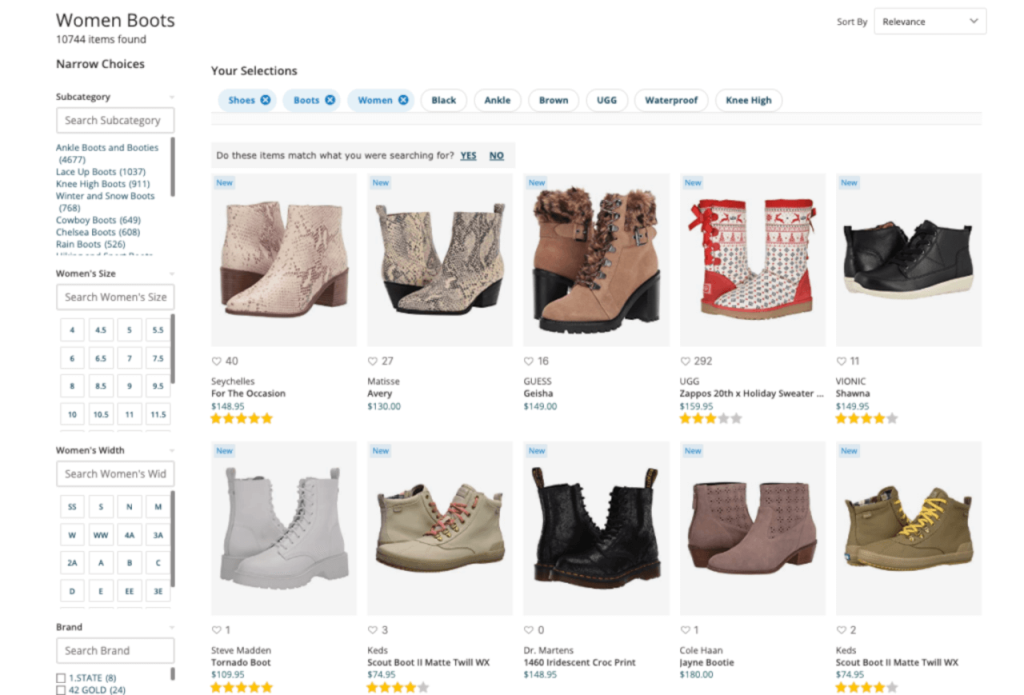Like me, you’re probably still recuperating from your Black Friday/Cyber Monday tech hangover. Did I really need to purchase a year’s subscription to Disney+, an Amazon Fire Stick, an Amazon Echo, and an Echo Dot? Of course I did. Baby Yoda, anyone?
Thousands of consumers like me snapped up good deals galore at mega-online retailers like Amazon, Walmart, Target, and Zappos. On any given day, not just Black Friday, these brands get massive site traffic and envious SEO rankings. And if you dig a little deeper, you’ll find something else contributing to their success: user-friendly search filters, powered by a well-designed taxonomy. Learning from these taxonomies is like a free holiday bonus gift for B2C and B2B marketers.
What Is a Taxonomy for Digital Content?
What exactly is a taxonomy? No shame in asking! A taxonomy, by definition, is a scheme of classification; a vocabulary of terms, grouped into categories and usually subcategories. In science, it can be applied to living and extinct organisms.
In content strategy, it can be applied to your digital content. It’s a way to define your content using clear, logical categories and associated tags so that people searching your website can more easily find what they’re looking for. Here are a few more defining aspects of a taxonomy for digital projects:
- It employs a controlled vocabulary, organized by hierarchy. This means it can contain both parent and child tags.
- The taxonomy is in sync with a site’s content, including navigation and attributes, but typically does not duplicate all content. So the way you choose to organize your taxonomy will likely differ from how content is organized in the navigation.
- The taxonomy is built and maintained in the website’s content management system.
Here’s an example from a Zappos page that illustrates great use of taxonomy:

As you’ll notice, this page allows shoppers to more easily surface relevant content while on the page using filters. It prioritizes more important filters, allows users to make multiple selections to refine their search, and truncates long lists of filtering values so the filtering options are easy to scan.
Besides enabling relevant filtering within your search engine and returning accurate results based on assigned tags, taxonomy can also assist with:
- Content display and filtering: Marketing tags are associated with content to drive display. Topic tags help users search, filter, and navigate on individual content pages.
- Personalization and recommendations: Relevant featured content based on marketing and audience, geography, and tags.
- Reuse: Bundle content for syndication by marketing or topic tags. Use tags to cull selected research to repackage for redistribution, print, to make available to nonprofits, and enable RSS feeds.
How a Taxonomy Enhances Your Content
Let me also point out what taxonomy is not. It is not meta data. It is not navigation. It is also not just a big group of tags. When done well and with much consideration for how your audience interacts with your digital channels, a good taxonomy allows your content to be:
- Accurate: A standardized vocabulary gives you consistent labels for all your content and assets across all formats (e.g. html, pdf, video, audio).
- Flexible: Using a tagging system means that content can be reused more easily—for example, bundles of topical theme-driven content can be gathered instantly and related content can be accurately associated.
- Findable: When a taxonomy is used to standardize copy and tag content, it means that your site is more likely to have accurate search results and get users what they want.
- Easy to manage: When your editorial and production staff have a clear sense of the content and how to apply a taxonomy, they’re more likely to maximize its potential.
Ready to get started on building a taxonomy? Great! You’ll want to first interview stakeholders and review assets and analytics. (What are the most popular searches and pages?) With these insights, you can begin to determine what the most useful tagging categories and user-friendly tags are for your digital content. You can also contact us to help you get started.
And the next time you shop online, pay attention to how certain websites enable you to find content so easily—sometimes too easily, as was the case for me and my Black Friday shopping spree.









